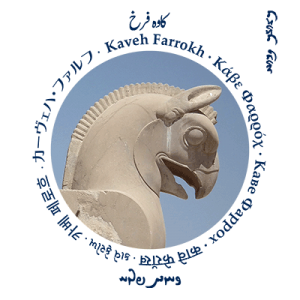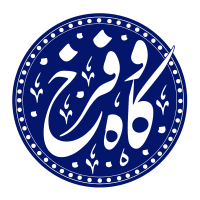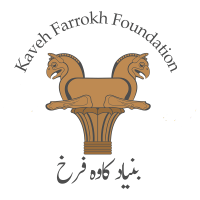The essay further below originally titled The Persian Gulf vs. “The Ar-bi-n Gulf” was penned by A. K. Jabbari – note the textbook by Svat Soucek first published by Mazda Publishers in 2008:
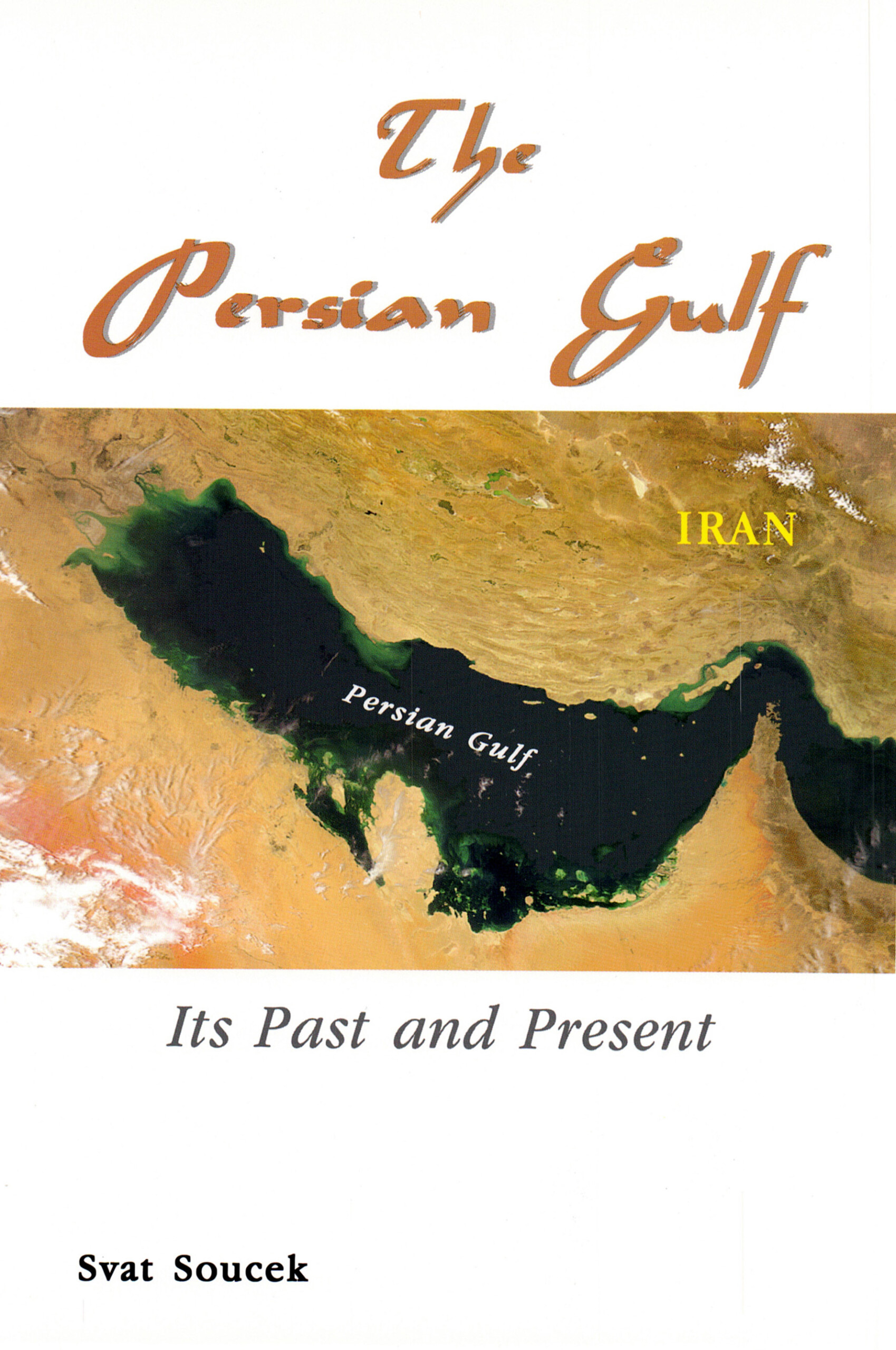
Kindly note that the images and accompanying captions that appear further below did not appear in the original essay and are derived from previous entries in kavehfarrokh.com. The text of the original article penned by A. K. Jabbari has been slightly edited in the version printed further below.
Before proceeding to the article, kindly consider signing the petition against the suspending of the Honours programme in Greek & Roman studies in Université d’Ottawa/University of Ottawa:
https://www.change.org/p/save-greek-and-latin-at-the-university-of-ottawa
See also Bluesky account: https://bsky.app/profile/antrelclaottawa.bsky.social
This was reported in the CBC News outlet on November 4, 2025. Canada has been experiencing deep budget cuts to its universities, notably in the Humanities and Social Sciences. In this regard, all of academia, Greco-Roman Studies, Iranian Studies, Arabian-Islamic Studies, etc. stand in solidarity in the promotion of education and learning.
========================================================================================
The Persian Gulf has been a vital waterway and a center of human civilization for millennia. The region was home to some of the world’s oldest civilizations, including Sumer, which emerged in Mesopotamia (modern-day Iraq) along the northern shores of the Persian Gulf. Archaeological evidence shows that ancient maritime trade routes connected Mesopotamia to the Indus Valley and beyond, with the Persian Gulf serving as a key conduit.
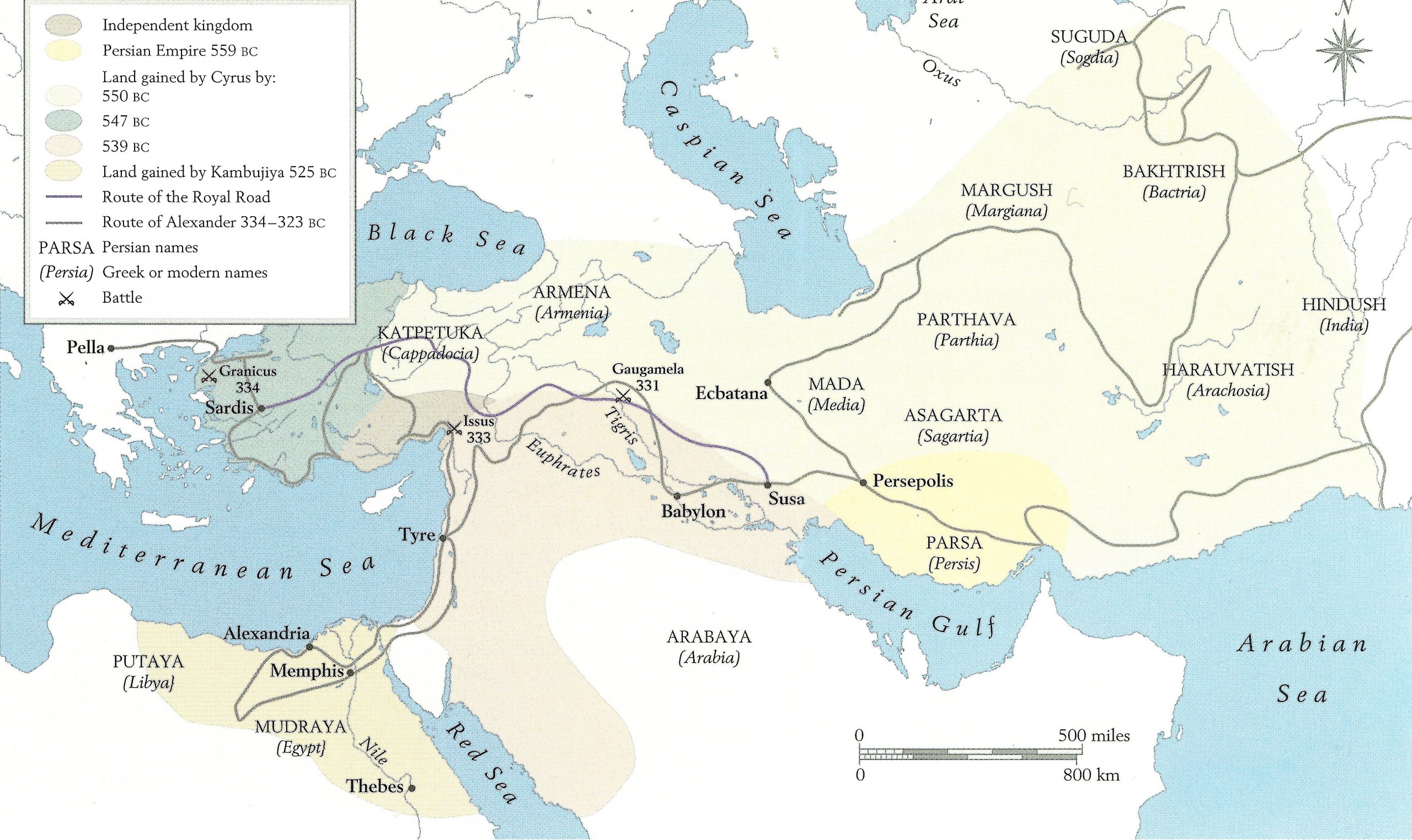
Map of the Achaemenid Empire drafted by Kaveh Farrokh on page 87 (2007) for the book Shadows in the Desert: Ancient Persia at War-Персы: Армия великих царей-سایههای صحرا-:
The body of water was first called the Persian Gulf by ancient Greek geographers in the 5th century BCE, reflecting the dominance of the Achaemenid Empire (the first Persian Empire) in the region.
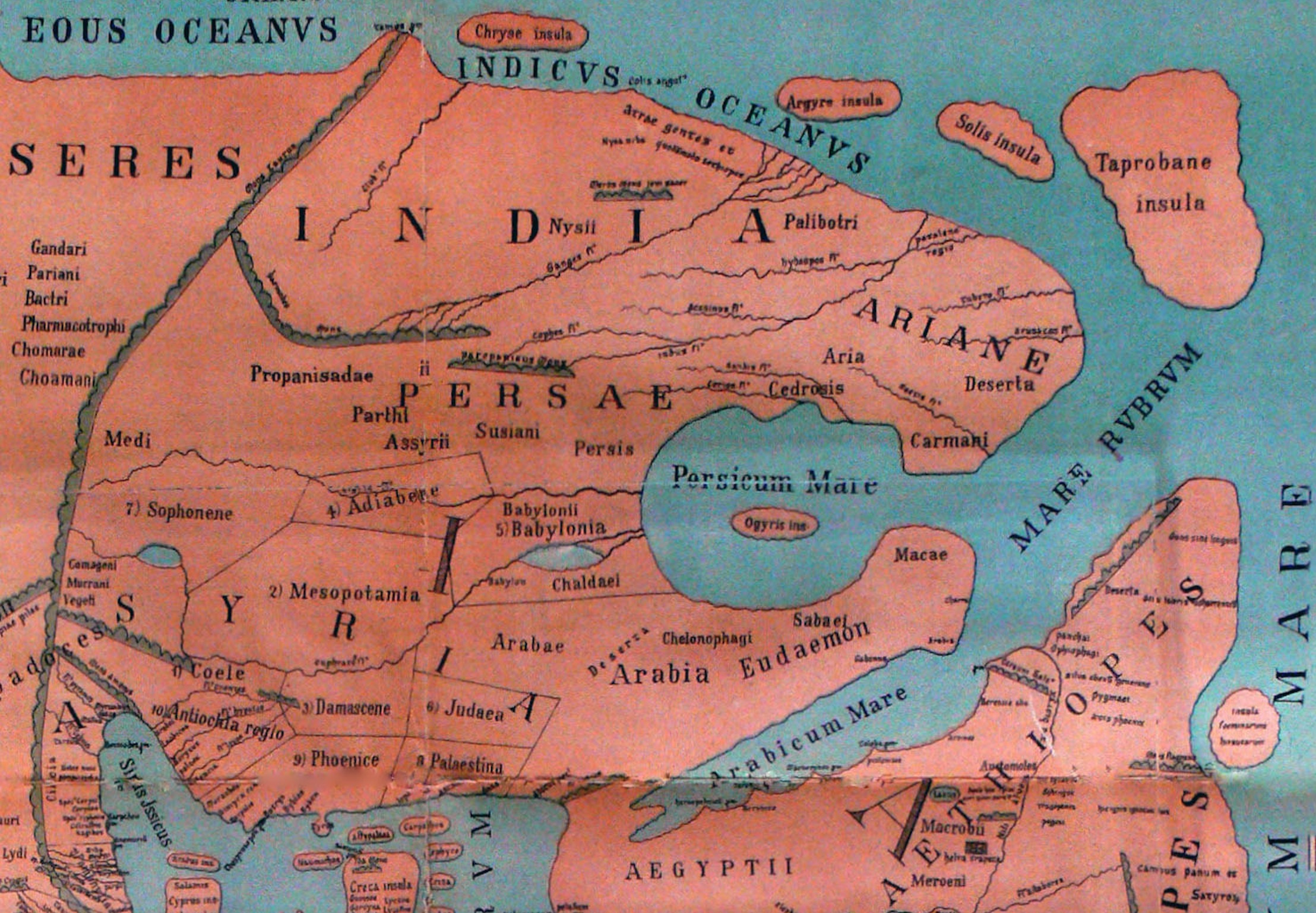
Close-up of a Rotated Map by Pomponius Mela (originally drafted in 43 CE) reproduced in Mappa Mundi by Konrad Miller in 1898 (Bild Vi. “Rekonstruierte Karten”, Tafel 7 [Picture Vi, Reconstructed Maps, Plate 7]) (Photo of image: Public Domain). The designation “Persicum Mare” (Persian Sea) is clearly and historically attested upon the map.
The name has been consistently used on maps and in historical documents for over 2,600 years.
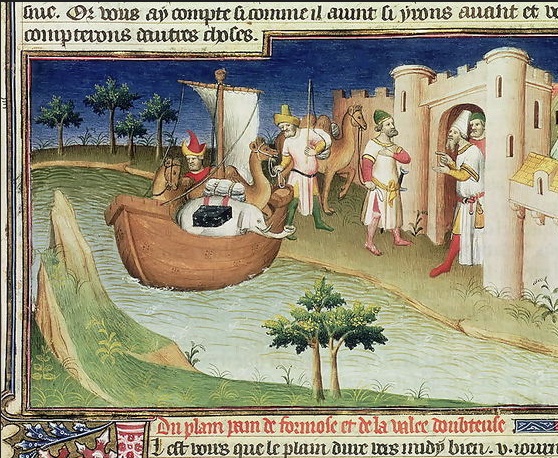
Picture by the French-Flemish manuscript illuminator, Boucicaut Master whose works were created in circa 1375-1400 (Source: فوسکا). As per the above manuscript “Marco Polo with elephants and camels arriving at Hormuz on the Gulf of Persia from India“. For more … Marco Polo in the Persian Gulf …
European Colonialism
Beginning in the 16th century, European powers such as Portugal, the Netherlands, and Britain competed for control of trade routes and influence in the Persian Gulf. By the 19th century, the British Empire had established dominance, turning the Persian Gulf into a frontier zone for protecting its Indian empire.
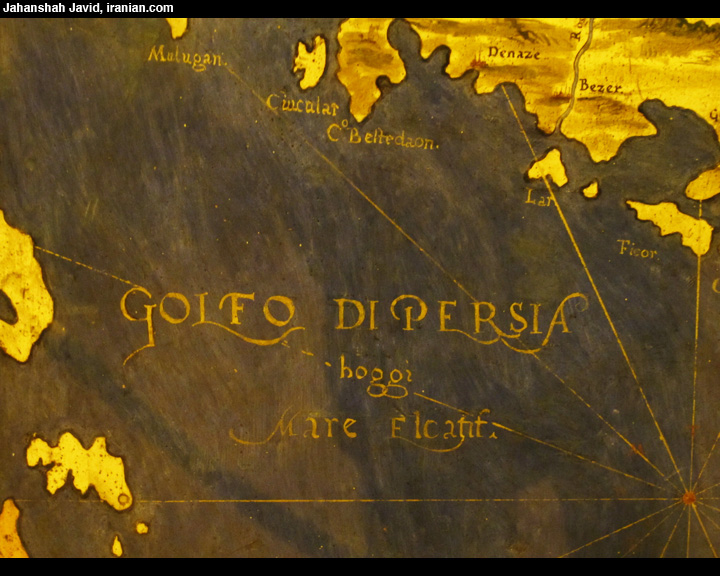
Florence 16th Century Map of Persia which cites ” G o l f o d i P e r s i a” (Source: Jahanshah Javid in Iranian.com).
Oil Discovery
The discovery of vast oil reserves in the early 20th century transformed the region. The Persian Gulf became the world’s most critical source of energy, and the countries bordering it—including Iran, Iraq, Saudi Arabia, Kuwait, Qatar, Bahrain, and the UAE—experienced rapid economic and geopolitical change.
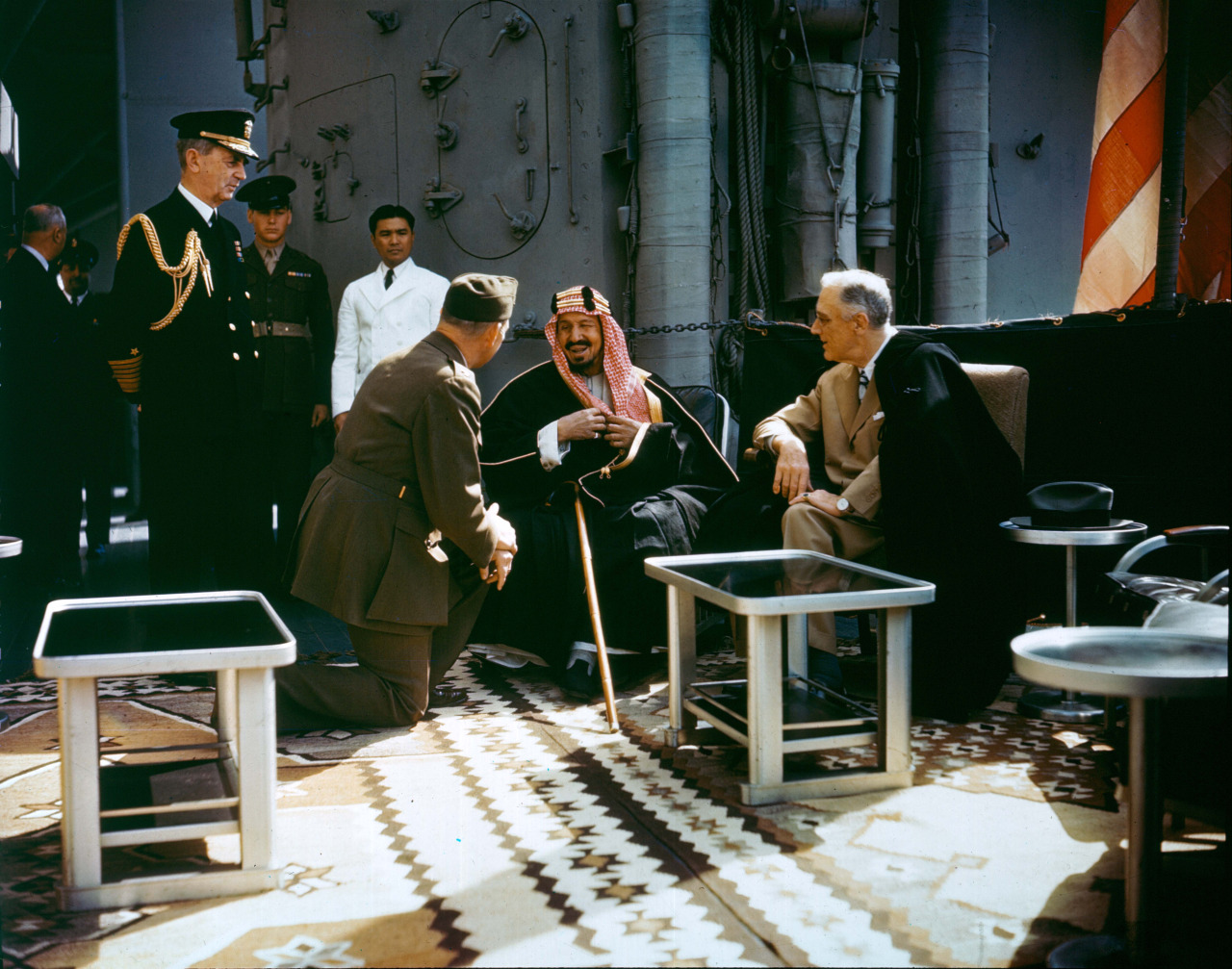
King Abdulaziz ibn Abdul Rahman Al Saud (reigned 1932-1953) meeting with US President Franklin D. Roosevelt (1882-1945) (at right) aboard the US warship, USS Quincy, after the Yalta Conference (Feb. 4-11, 1945) (Source: Public Domain). The interpreter is Colonel Bill Eddy with Fleet Admiral William D. Leahy located to the left. Ibn Saud is on record for having stated “…we hate the Persians…” (Allen, 2006, p.245; God’s Terrorists: The Wahhabi Cult and the Hidden Roots of Modern Jihad, Abacus: London). Western statesmen and business lobbyists to the present day continue to ignore these types of attitudes among non-European leaders in favour of lucrative commercial and geopolitical interests.
The name “Ar-b-an Gulf” began to gain popularity in the 1960s with the rise of pan-Arabism and Arab nationalism. Until then, and for centuries before, the body of water had been internationally recognized as the Persian Gulf.
Who Used It First?
Some evidence suggests the name was first promoted by a Westerner—Sir Charles Belgrave, a British advisor to the ruler of Bahrain—who in 1955 advocated for using “Ar-bi-n Gulf.”

Shaikh Salman Bin Hamad Al-Khalifa (at left) and Sir Charles Belgrave (right) (Picture Source:Flicker) who was England’s Government Adviser to Bahrain. It was Belgrave who first pioneered the concept of changing the name of the Persian Gulf. The motives for such revisionist schemes are not clear, but it is possible that Belgrave was calculating that such actions would create frictions between the Iranians and the Arabs. For more see here …
However, its wider adoption was fuelled by Arab political movements, particularly under leaders such as Egyptian president Gamal Abdel Nasser, who sought to promote Arab identity and influence in the region.
A “Note” of Irony?
The use of the fictitious name Ar-bi-n Gulf became a political tool for Arab states bordering the waterway to challenge the historical and cultural weight of the name Persian Gulf.
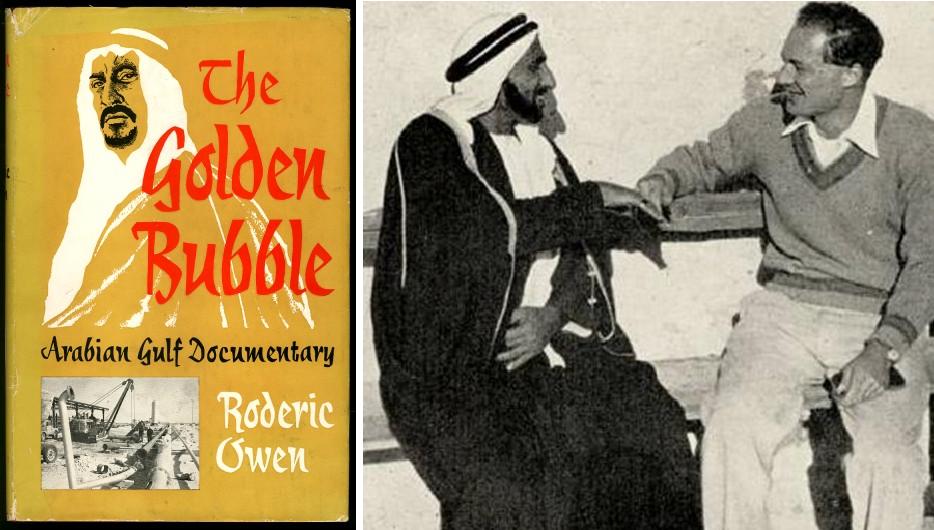
Photograph at Right: Roderick Fenwich Owen in khaki trousers conversing with the Sheikh of Ras al-Kheima (circa late 1950s) – Photograph at left: Owen’s 1957 book which finally popularized the “Ar-b Gulf” concept. Owen’s application of “Ar-b Gulf” to the historical Persian Gulf was not protested by British and Western academics/historians. For more see here …
Nasser’s defeat in the 1967 Arab-Israeli War dampened the momentum of Arab nationalist aspirations, but the use of the invented term persisted.
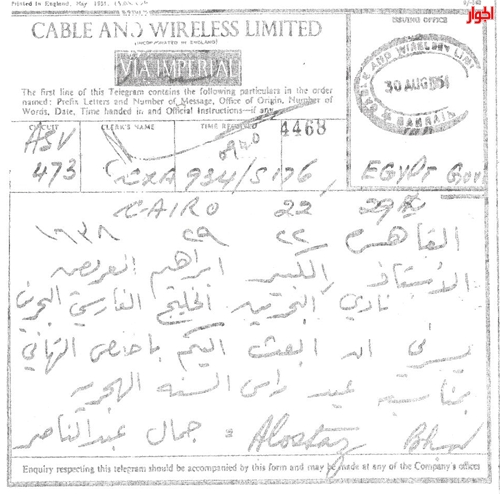
Notable is the fact that the late Egyptian President Gamal Abdul Nasser (1918-1970) himself had referred to the Persian Gulf by its correct name in his correspondence as seen in his telegram above, transmitted by Egypt’s Cable and Wireless Company Limited on August 30, 1951. The above document (originally appearing in the now defunct Iraqi AlJewar website) had been forwarded to kavehfarrokh.com on November 27, 2013.
With the oil boom of the 1970s, wealthy Arab states on the southern shores of the Persian Gulf used their newfound petrodollars to promote the name internationally—funding campaigns in Western media, newspapers, publishing houses, and beyond.

A historical map with the name “Persian” literally erased from the designation “Persian Gulf”, to leave only the invented term “Gulf”. This falsified map is housed in Dubai’s Saeed Al Maktoum House in the United Arab Emirates (UAE). Interestingly the UAE along with several modern day states in West Asia, excluding the historical states of Turkey and Iran, were created in the 20th century. States such as the UAE and Saudi Arabia for example, were literally created in large part due to Anglo-European economic and geopolitical management policies. Buttressing such policies are additional Anglo-European 20th century inventions such as “The Middle East” … for more see:
Put simply: The “Ar-bi-n Gulf” is a politically motivated invention—not associated with history, This is in stark contrast to The Persian Gulf, which is the historically and internationally recognized name, rooted in thousands of years of civilization and culture.
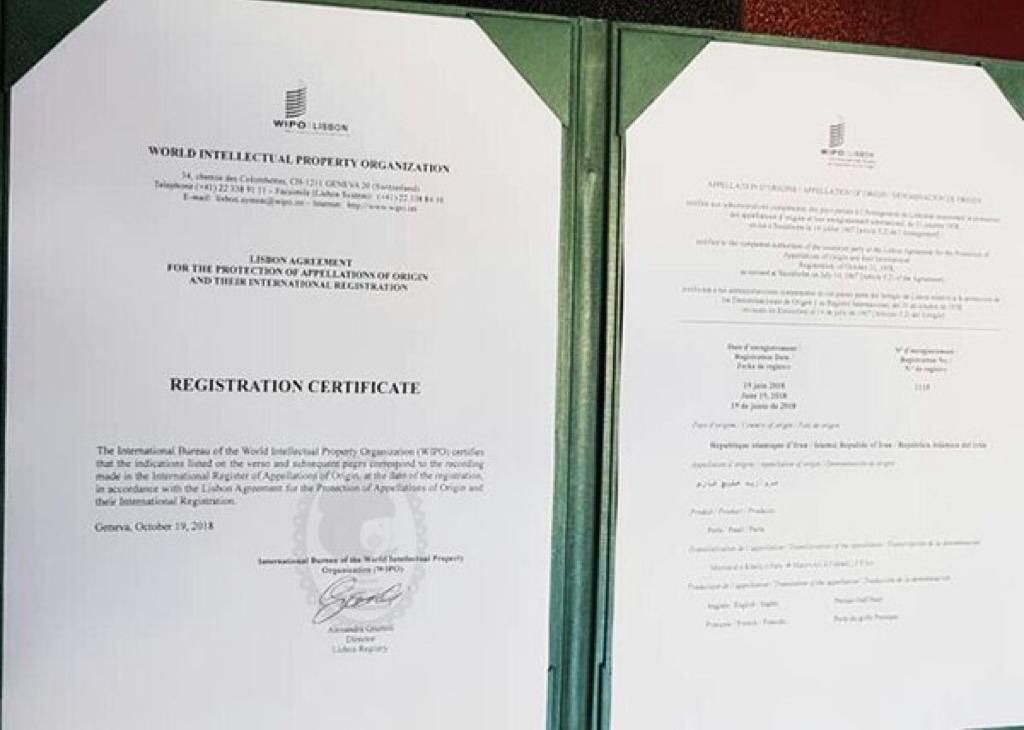
WIPO Registration certificate attesting to the correct historical body of water known as the Persian Gulf (Source: Mohammad Ala) … for more see Here … This is the first official registration at WIPO (which is a UN body). There have been two other previous declarations (UNAD 311 of 5 March 1971 and UNLA 45.8.2(c) of 10 August 1984) affirming the correct name for the Persian Gulf. WIPO has re-affirmed the legality of this term as (unfortunately) politically motivated outlets have continued using fabricated terminology.

